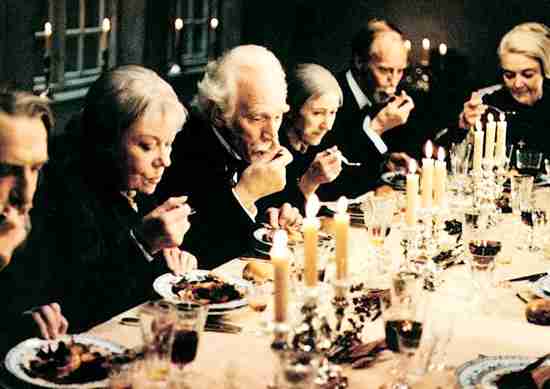

Young men went to church just in the hope of meeting them. ‘As young girls the beauty of Martine and Filippa had been extraordinary, akin to flowering fruit trees,’ says the narrator. So why is she living with these two puritan sisters? ‘Babette’s presence in the house of the two sisters can be explained only through the hidden regions of the heart.’

She was clearly very glamorous in her youth, and seems rather out of place in this community. Living with the two sisters is a French servant called Babette. He has died, but the community have carried on his work, in a sort of religious personality cult with his picture on the wall at the centre of their meetings. Their father had been a ‘priest and prophet’, the founder of a religious Lutheran sect. The narrator says that they are past their prime: they never married. Two sisters, Martine and Filippa, live in a small village. We are in a rather bleak-looking part of coastal Denmark in the late 19 th century. It shows the transforming power of gastronomy in the most beautiful way, and with a nice dry sense of humour, too.

Dinesen's admirers and scholars often seek parallels between her life and her writing, and in "Babette's Feast" Dinesen seems to draw on her childhood and adult experiences to give the story depth and authenticity.Babette’s Feast: this 1987 Danish-language film adapted from Karen Blixen’s novel is a love story about food and drink. As an adult, Dinesen found herself operating a coffee farm in East Africa, an experience that taught her a great deal about contrasting people and cultures. Through this experience, Dinesen came to understand and appreciate the ways women take care of loved ones and of each other. In the wake of this tragedy, her grandmother and a nearby aunt helped care for the family.

In 1958, "Babette's Feast," along with other stories published in magazines, was compiled into Anecdotes of Destiny, which was available as of 2004.Īs a child, Dinesen suffered the loss of her father by suicide. A friend had advised her to write about food because Americans love food, so she crafted a story about the transformative powers of a very special feast. A number of her stories were featured in Ladies' Home Journal, including "Babette's Feast," which was first published in 1950. Having established her reputation as an author in the 1930s and 1940s, she sought to increase her income in the 1950s by having stories published in American magazines. Perhaps best known for Out of Africa (1937), Isak Dinesen is the pseudonym of Karen Blixen.


 0 kommentar(er)
0 kommentar(er)
